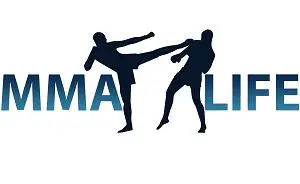If you actively train in mixed martial arts (MMA), then you know that MMA sparring sessions are intense and downright draining. Sparring must be incorporated into your training to improve your skillset.
However, sparring doesn't rely on just good technique. The importance of having good cardio is also tantamount, and extremely obvious when you find yourself overcome with exhaustion before the round timer goes off. No matter how good your technique is, it goes quickly thrown out the window when your gas tank approaches empty. This will create an undesirable scenario of fighting sloppy, which is a bad habit to maintain.
If you are planning to take MMA seriously, you should integrate ways to improve your cardio. Improving cardio for MMA involves doing activities that increase both your anaerobic and aerobic capacity. This includes doing both general cardiovascular exercises like running, and sports-specific exercises to emulate the energy demands of the sport.
The following content in this article could be adapted or blended with your current training regimen to get you in prime cardiovascular condition.
MMA-Specific and Situational Training Sessions
Sparring
Nothing could be simpler for improving your cardio than to continue training and having consistent sparring sessions. The modifications below should enhance your training.

- Increase the sparring rounds' length of time. If you have been holding 3-minute sparring sessions, then try changing it to 5 minutes instead.
- Find a good training partner and spar with them at an aggressive pace, but in a controlled manner. Avoid those teammates that are reckless, who constantly headhunt without concern for your safety and/or try to knock you out on purpose.
Wrestling Drills
Normally, grappling is one of the most energy-draining aspects of MMA. To improve your technique and conditioning, try to intensify grappling-specific technique drills.
- Pummeling Drills - Find a teammate to clinch and work on pummeling drills. Start out slow to warm up. Continue to pick up the pace and then begin actively fighting for double underhooks against each other.
- Offensive Wrestling Drills - You could do wrestling drills by yourself or with a partner. Pick your favorite shots and repeat them at a fast pace. Have a timer and create goals for yourself as you work on these drills. Your goals may be to hit a specific number of shots in a given time or to increase the overall length of time.
- Defensive Wrestling Drills - Work on sprawling and then follow it up by circling out or simply popping back into your stance, before sprawling again. If you do not have a strong wrestling or grappling background, this should be an area you should concentrate on a lot.
Shark Tank
If you are getting close to a competition match, it is standard at many martial arts academy to put you through a "king of the hill" or a "shark tank" style preparation. These types of sparring sessions will have one person stay in for a selected period of time while fresh training partners rotate through every minute or so. Not only will the selected person have little or no breaks for an extended amount of time, but they are also commonly placed in disadvantageous positions encountered during a match.
You should recruit other teammates, during open mat sessions, to try the following:
- Takedown defense off the wall or fence - Lineup your teammates and have them take turns trying to take you down. You could either make it based on a round timer or based upon task completion. An example of the latter choice would be to have a new teammate come in when you get taken down or if you were able to reverse the position.
- Escape - This scenario involves being put in bad positions such as the bottom of side control, mount, or having someone on your back. Your goal is then to escape or reverse the position. Your training partners should focus on controlling and keeping you in the position or try to submit to you. If you escape or your partner submits you, then reset your position while another teammate takes their place.
- Striking - This could be applied to striking sessions as well. Simply rotate in a new person after each round.
These training sessions provide a great opportunity to practice getting out of bad positions. In addition, you are doing it an exhaustive state, which will strengthen you mentally and physically.
Cardiovascular-Specific Fight Conditioning
Running
If you want to fight, you have to learn to love running (although some like Bazooka Joe Valtellini might disagree). Whether you truly do love running or not, the mindset will help bring focus to the task at hand. Ideally, you should combine both long-distance running and sprints into your workouts.
- Long-distance running - Builds your aerobic endurance. Your aerobic endurance will help you last longer in the cage or ring.
- Running uphill - Running up a mountain or on a treadmill with an elevated incline is much harder than running on flat terrain. It will increase your endurance and build additional leg strength.
- Sprints - Sprint workouts are great for mimicking the aggressive clashes that occur during sparring sessions. There are various distances (20 yards vs. 100 meters) and type of sprints (straight line vs. shuttle). You could adapt to your routine exercises. Restrict yourself to short rest periods. This action will increase the difficulty and push your ability to recover to its limits. Sprints will increase your anaerobic capacity, which is important in those short scrambles or those short exchanges in the pocket.
- Modified sprinting sessions - Challenge yourself by having a band wrapped around your waist or straps attached to your chest. The other end of this attachment should be a rope held onto by a teammate or attached to an object, such as a parachute or a weighted sled. This will add resistance and force you to pull at a much greater force.
- Beep Test - The beep test is a marvelous method to measure and improve your overall cardio. It is a continuous 20-meter shuttle run exercise. As the "level" and number of shuttles escalates, the time interval shortens. This forces you to continually pick up your pace and have less time for rest. The test continues until you fail to complete a 20-meter shuttle in the time allotted for the level you are on. The objective of this test is not about running as fast as you can, but to have the endurance and ability to continually run at a fast pace.
Biking
Long-distance biking helps maintain your endurance without the hard impact on your joints that is commonly associated with running activities. Biking is also terrific for preserving your cardio when you are not in training camping mode. It is great to combine this with previously mentioned running workouts and swimming.
Conor McGregor has been a great proponent of biking since linking up with former Irish cycling champion Julian Darby. He loves it for the fact that he is able to still work on his cardio while taking it easy on his knees. His cycling regimen picked up the closer he got to fight week.
Swimming
Swimming is an overall body workout that reinforces your cardio without putting a lot of stress on your joints, like running and sparring. It is great for active rest days where you are not grinding through MMA training sessions or doing strength and conditioning workouts. Nick Diaz is a proponent of swimming as training and swam from Alcatraz to shore five times.
A recent trend for fighters and athletes alike has been deep end water training. Dominick Cruz has been especially vocal about its benefits, stating that deepwater training:
has been a fundamental key, and a high-level training system that integrates perfectly into my MMA training regimen. I could not ask for a higher quality of mental fortitude, breathing control, and overall maximum lung capacity upskill, which is paramount in the fighting arena. I am grateful to be indoctrinated into a world-class initiative that is suitable to fulfill all athletic roles or tasks at a high caliber.
Here is a clip of Dominick Cruz doing deep water training at Deep End Fitness:
╳ Unreal pool session with @deependfitness .. Thanks for having me
— Dominick Cruz (@DominickCruz) June 3, 2019
╳#DominickCruz #DomCruz #TeamCruz #CruzAlliance #UFC #MMA .
Snapchat | DomCruz619
Twitter | @DominickCruz
Web | https://t.co/0hAwOxEWI0 pic.twitter.com/OQIf3hNAG0
Strength and Conditioning Workouts to Improve Your MMA
Many mixed martial artists lift heavy weights or do powerlifting type exercises to build muscle mass and strength during rest periods between flights. As they start training camps, they begin transitioning to strength and conditioning workouts that increase their body’s endurance and build explosive movements.
To replicate the adjustments your body goes through as you transition between striking and grappling scenarios during MMA sparring sessions, it is common to chain together different strength and conditioning exercises that mimic this behavior.
The following list is an example of different exercises chained together to create a difficult but rewarding routine for improving your cardio and overall body strength. In your first attempt, each exercise should be done for one minute, and this set should be completed three times with a minute break between each set.
- Battle rope swings
- Tire lifts
- Sledgehammer swings
- Sled push
- Box jumps
Conclusion
Cardio is a killer in many sports. Finding yourself wiped out in the middle of a round is not a pleasant feeling or a good scenario. To maintain a high output throughout your MMA sparring sessions, try integrating these tips into your workouts. Additionally, you should continue to work on improving the weak aspects of your MMA skills. This will improve your technique and efficiency in movements, which is beneficial because it prevents unnecessary expenditure of energy.




